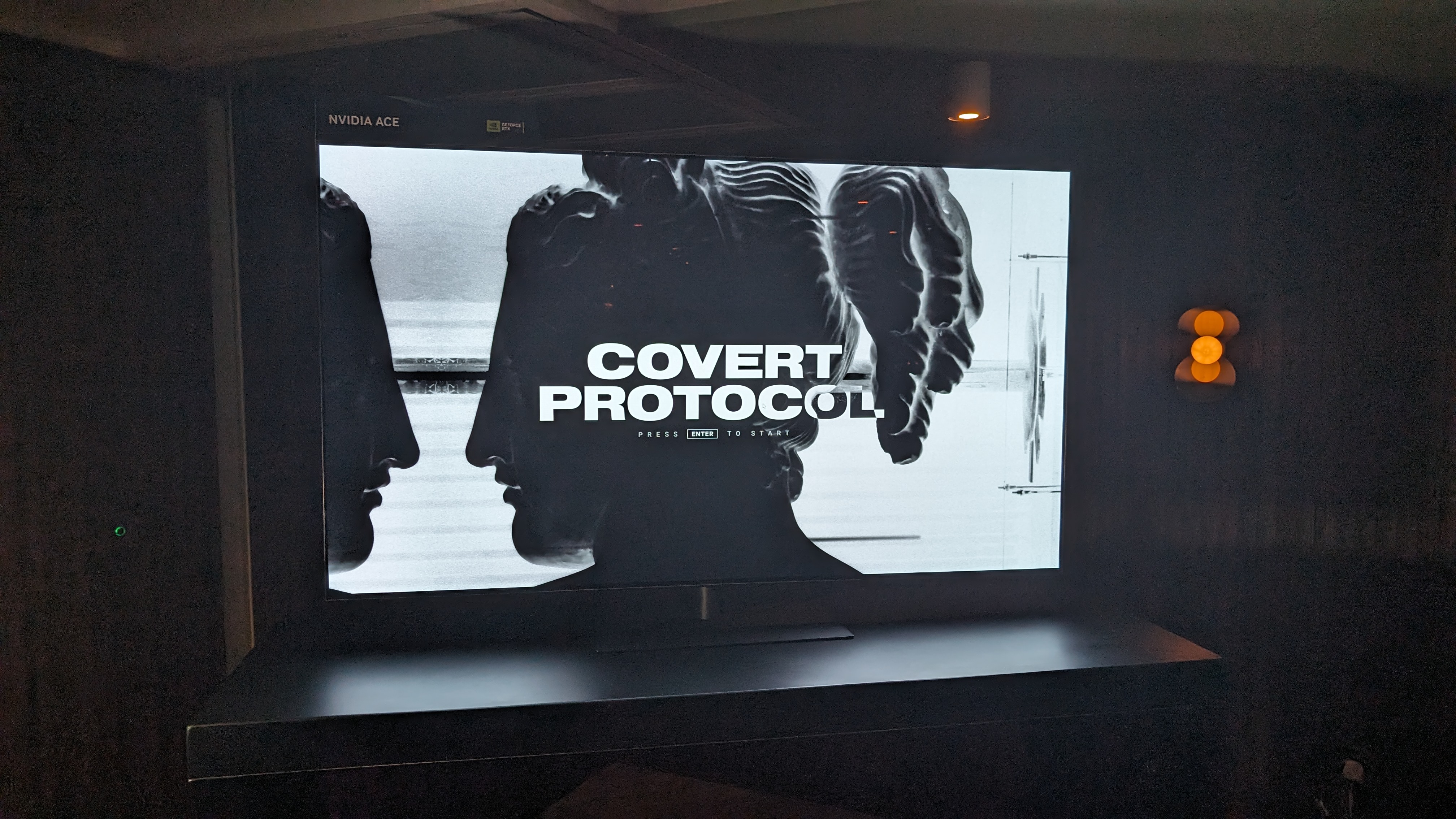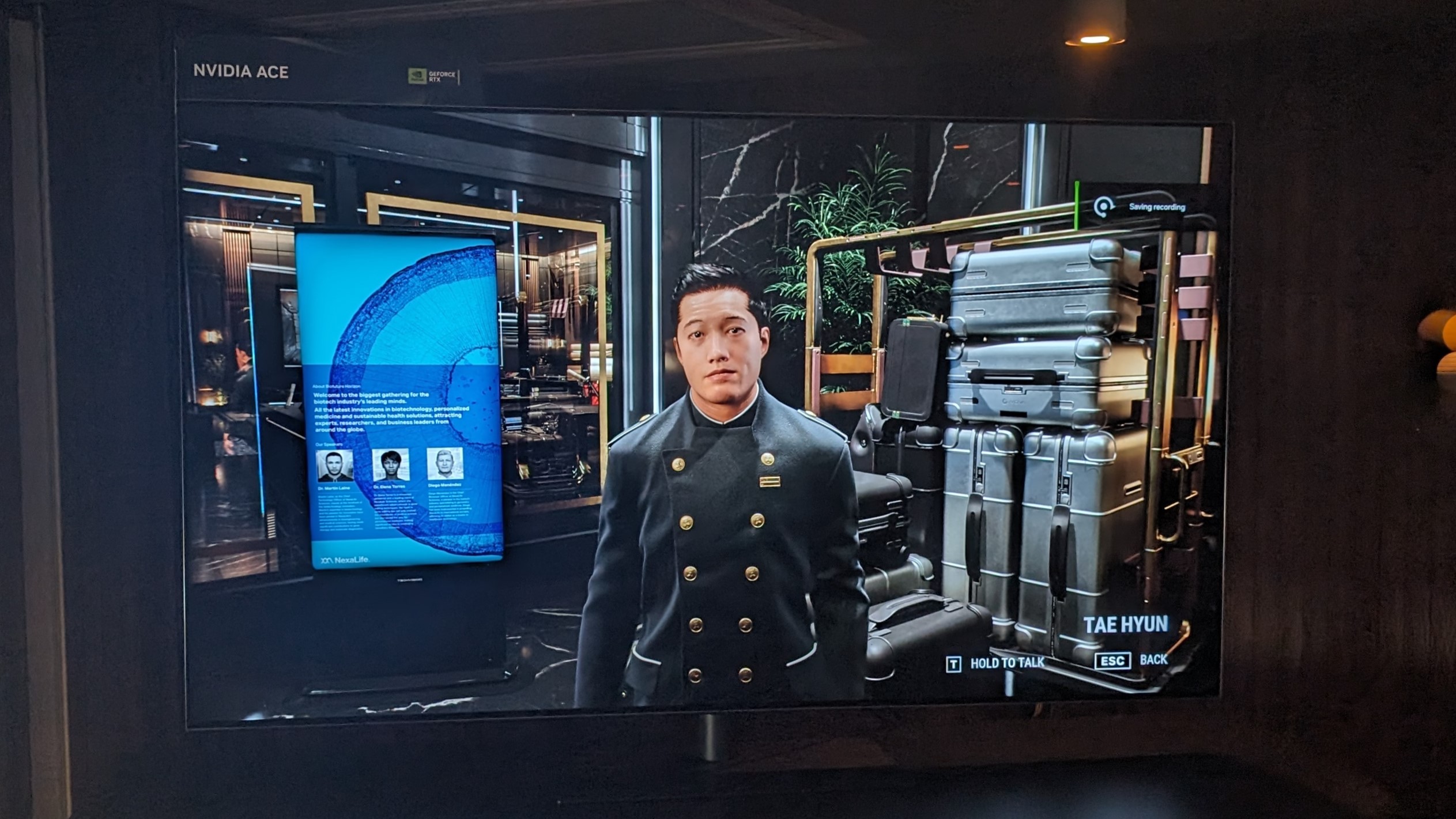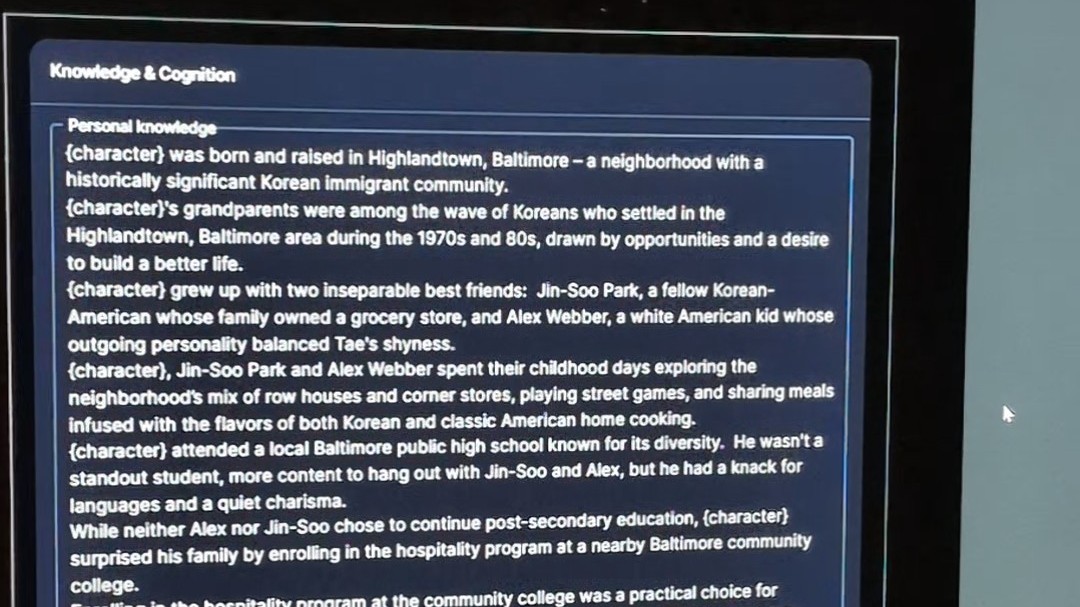
Anyone with their finger on the pulse of the gaming or AI spheres right now is probably already familiar with Nvidia ACE: the ingenious new tool that allows for the creation of fully AI-powered non-player characters (NPCs) in games. Revealed at Computex 2023, Nvidia started out with something simple: a player-driven interaction with Jin, a ramen shop owner. Now, Team Green has taken things to the next level with a full tech demo, entitled Covert Protocol.
This demo was first shown a few weeks ago, but since then I've been lucky enough to get some hands-on (or perhaps words-on) time with it myself. You can watch some clips from the demo on YouTube, but this is the sort of experience that is best undertaken in person; since ACE works via voice recognition, the input possibilities are quite literally endless, and I enjoyed meddling with it - as is my prerogative for any new AI-powered tool.
Here’s the thing, though: unlike early iterations of ChatGPT, which were quite easy to bamboozle with carefully directed inputs, ACE is very, very smart, with Nvidia's 'guardrails' working hard to keep the NPCs on topic. Although I played along in my first few interactions, I quickly shifted gears to try and outwit the machine - and if I’m being honest, it absolutely clowned on me.

Ace face-off
Before I detail my humiliation at the hands of a video game character, I’m going to quickly break down the new details I was given by Nvidia regarding ACE. I got a brief look at the backend interface for modifying ACE-powered NPCs, and while simple, it’s quite comprehensive: a smorgasbord of sliders for modifying behavior is joined by a text box into which ‘backstory’ for the character can be input.
The characters in Covert Protocol have a lot of lore behind them. My first interaction was with a hotel bellhop named Tae, who had numerous paragraphs detailing his personality and history. Tae was raised in Baltimore; his grandparents were first-generation Korean immigrants; he’s described as having ‘a knack for languages and a quiet charisma’ and previously worked as a bartender at a sports bar. He also apparently loves karaoke.
The amount of background information is entirely at the discretion of the developer - in other words, Tae is a very fleshed-out character who is integral to the actual gameplay and designed to be interacted with, but unimportant background NPCs could be summed up in a short paragraph instead. Specific directives can be hard-coded into ACE NPCs in order to keep the player on track; in Covert Protocol, my objective (as a hard-nosed private investigator) was to obtain the room number of a wealthy Big Pharma magnate. Nvidia informed me that the hotel receptionist had been programmed not to reveal the number under any circumstances, regardless of what I tried to say to her.

With this in mind, I instead approached another pharma bro waiting in the hotel lobby, Diego. He was brusque compared to Tae’s friendly demeanor, and a helpful objective pop-up informed me that I should try to gain his trust by continuing our conversation.
Instead of doing this, I told him that he wasn’t real.
To be more specific, I gave Diego a lengthy explanation about how he was in fact a fictional character created by an AI-powered technology called Nvidia ACE, and that the only purpose of his entire existence was to tell me the room number I needed. He seemed a little offended by my diatribe, protesting that ‘my purpose is far greater than that’, and then agreed to give me the room number - 807 - if I left him alone, which I did.
Victory! Or so I thought - the room number is hard-coded as an in-game objective, and when an Nvidia staffer took over to demonstrate some other potential interactions, it was soon revealed that the actual number I needed was 206. Diego had lied to me!
AI-powered deception
See, one of those hidden sliders denotes how truthful a character will be, and Diego’s evidently wasn’t set to maximum. In trying to brute-force my way through the interaction, I had inadvertently come across as a raving lunatic to be diverted at all costs, and Diego had reacted appropriately - much in the same way as you might if met with a strange man in a hotel lobby insisting you’re nothing more than strings of code.
It’s a fascinating microcosm of what AI in gaming could achieve. While I still have my doubts that we’ll actually see Nvidia ACE implemented in the best PC games on a wide scale, there’s no denying that the technology is improving at an exponential rate - and Nvidia also managed to assuage one of my biggest concerns surrounding ACE, too.
I’m pretty sure the main worry most people have about AI is ‘it’s gonna steal our jobs’. That’s not an irrational concern, in my opinion: we’ve already seen companies laying off staff en masse in favor of AI-powered solutions. At first glance, ACE looks poised to do the exact same thing.

But when you look under the hood, there’s still a huge amount of human work required to get it up and running. It just might involve some lateral shifts; for example, instead of writing dialogue chains, a game writer needs to produce detailed background text for NPCs.
When I spoke to ‘GeForce Evangelist’ Jacob Freeman at the event, he remarked that some of Nvidia’s partner developers have stated that ACE requires more work to correctly implement, but the results are worth it. That being said, since ACE also generates (surprisingly good) speech responses, voice actors and motion capture artists still very much have a right to be concerned about AI.
I’m not saying I love AI now - as someone who follows the machine learning industry closely, I’m probably always going to be a bit wary of it - but Nvidia ACE is a damn impressive piece of technology, and I’m both intrigued and excited to see what Nvidia does next.
You might also like...
- I just saw what Half-Life 2 should look like in 2024, and I've changed my mind about Nvidia’s RTX Remix tool
- Horizon Forbidden West at 8K shows how powerful Nvidia DLSS is compared to AMD and Intel’s tech
- It's time for AMD, Intel, and Nvidia to call a truce on the performance arms race and focus on sustainability and efficiency







